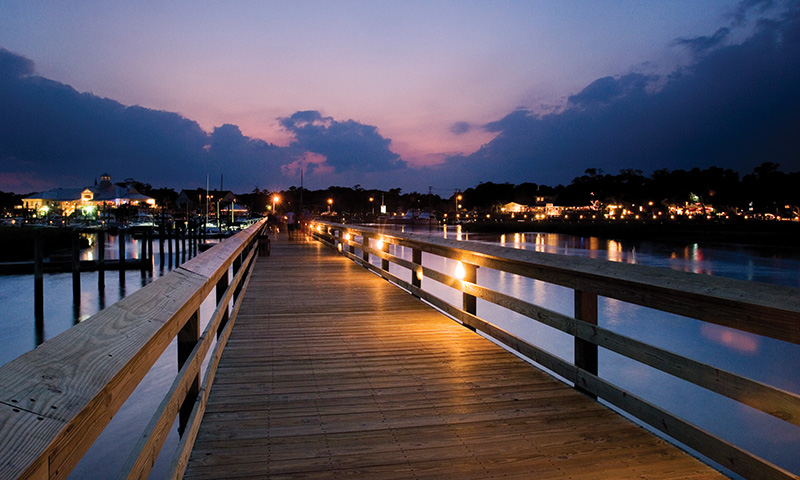The Grand Strand offers many worlds besides the glitz and glamour of Myrtle Beach.
Murrells Inlet has been a fishing village for more than 200 years. Fishing boats supply fresh catch to folks along Waccamaw Neck, sometimes anchoring right behind the village’s restaurants in the evening after they return from the nearby Gulf Stream. It’s no wonder that “Eat at Murrells Inlet” is the byword along the Grand Strand.

There is Pawleys Island, probably the country’s oldest beach retreat. In the 1700s, it was a summer paradise for river planters seeking cool sea breezes. Today it is still a paradise for those who like the “laid back” pace of Pawleys life.
With the Atlantic on one side and the salt marshes on the other, there are only 600 homes on the entire island and no stores or restaurants. Eight of Pawleys pre-Civil War buildings have been restored in the downtown historic district. One of these, The Pelican Inn, still welcomes guests.
Just across the causeway are The Hammock Shops, a collection of unique shops and restaurants built around Pawleys’ most famous export, the hammock. The ambiance of the island washes over the visitor like a cool breeze.
And then there’s Litchfield, a quiet,peaceful enclave that is decades away from the hustle and bustle of Myrtle Beach attractions. Centerpiece of the community is the Litchfield Plantation, built in 1750, overlooking the 600 acres of Carolina gold rice.
With its miles of white sandy beaches, Litchfield provides the best that nature has to offer. Attention has been given to maintaining the area as a natural preserve so that today it offers “the good life” just as it did more than two centuries ago.
And Georgetown, where a dynasty of wealth flourished years ago, has retained the charm and ambiance of a small southern town. The heart of the city runs parallel to Georgetown harbor where two centuries ago more rice was shipped than from any other port in the world.
It was a time when rice was king. Wealth came with the rice grown on 150 plantations, making the planters wealthy beyond understanding. It created an aristocratic society until the Civil War when slavery was abolished and the rice culture began to die.
The downtown parallels Georgetown Harbor. Antique and art galleries, restaurants, shops and bakeries cluster along Front Street. Within blocks are dozens of homes listed in the National Register of Historic Places, many of which are now bed and breakfast inns.